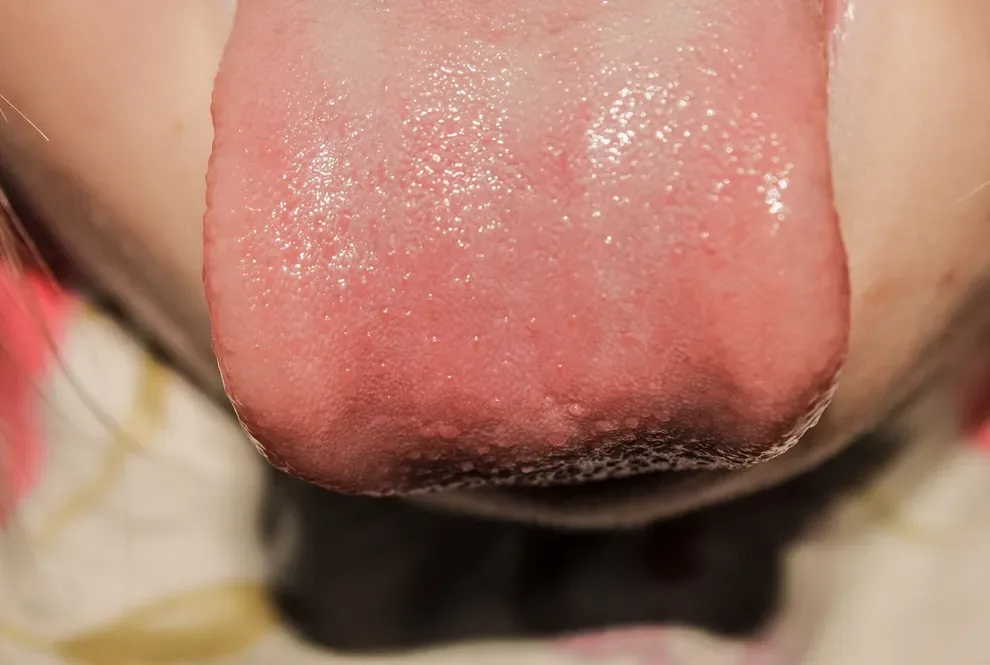Posterior Tongue Tie: Prevalence, Complications & Treatment

Table of Contents
- Posterior Tongue Tie Explained
- Spotting a Posterior Tongue Tie
- Complications
- Treatment Options
- Recovery Rates
Between 1 and 10 percent of babies have a tongue that is “tied” down. This condition is known as tongue tied or ankyloglossia.
The frenulum is a band of connective tissue that can become attached to the tongue, holding it down and restricting its mobility. This is most noticed when the front, or tip, of the tongue is tied down. The back, or posterior, of the tongue can also be tied, which is called posterior tongue tie.
Posterior tongue tie can interfere with feeding and speech in babies and children.
Posterior tongue tie is generally treatable with simple procedures that have high recovery and success rates. Options include feeding support to see if it will loosen on its own and surgical procedures to detach the tongue and increase the range of mobility.
Posterior Tongue Tie Explained
Tongue tie is a birth condition that is relatively common. The tongue can be “tied” in either the front two-thirds, called anterior tongue tie, or in the back one-third of the tongue, which is called posterior tongue tie.
The tongue’s mobility is limited as the lingual frenulum, the connective tissue attaching your tongue to the floor of your mouth, is abnormal. Often, it is too thick or too short.
Tongue tie is more common in boys than girls, but it can impact any infant.1 Babies who are born with a tongue tie often have a genetic mutation that makes it difficult to process folic acid in utero, which can contribute to an abnormal frenulum at birth.2
Spotting a Posterior Tongue Tie
A posterior tongue tie can be less noticeable than an anterior tongue tie. It is often most recognizable by difficulties latching on during breastfeeding and feeding difficulties.
A posterior tongue tie can be diagnosed by lifting up the tongue on both sides and noting tension and the presence of a “string” underneath the tongue connecting it to the floor of the mouth.
These are additional features of a posterior tongue tie:
Square or heart-shaped tongue
Dimpled tongue, especially when moving it
Limited tongue mobility side to side
Inability to stick the tongue out (forward)
Complications of Posterior Tongue Tie
Not all babies with a posterior tongue tie will have feeding issues, but many will. Some of the complications of a posterior tongue tie can include the following:
Trouble latching for breastfeeding
Pain in the mother during nursing
Poor weight gain
Colicky baby
Reflux
Clicking and making noises during feeding
Frustration with feeding
Milk leaking out of the mouth
Gassiness
Restless sleep
Snoring
Speech delays
Orthodontic issues
A posterior tongue tie can make it difficult for a baby to feed properly. As they age, the lack of proper tongue mobility can impact speech, eating, and dental formation of the mouth and teeth. This can lead to poor self-esteem and self-image.
More severe posterior tongue ties can also block the airway and cause breathing issues, especially at night when in a prone position. This can lead to sleep apnea and sleep issues.
A posterior tongue tie can vary in its severity and how it will impact the baby or child. A proper diagnosis is needed to determine the degree of tongue tie and to decide on proper treatment options.
Treatment Options
There are a number of reasons babies can have difficulties feeding. Often, the issues related to posterior tongue tie can be worked around without invasive surgical procedures.
Medical opinions say supportive measures are often preferable to having posterior tongue tie surgically corrected. Surgery can lead to additional complications, including infection, bleeding, scarring, and potential nerve or duct damage.
There is additional evidence that shows correcting a posterior tongue tie with an in-office surgical procedure can improve the tongue’s mobility. This often results in quick improvement in both feeding and speech.3 A frenotomy uses a small pair of sterile scissors to cut the frenulum, so the tongue can move more freely.
A more invasive procedure, called a frenuloplasty, is a surgical procedure done under general anesthesia. This is needed if the frenulum is too thick for the quicker in-office frenotomy.
Detailed discussions with your doctor and a lactation specialist can help you decide on the best approach. You may choose to see if the frenulum loosens up on its own with age. If the tongue tie is impeding quality of life, treatment may be the best choice.
Recovery Rates
The most common treatment for a posterior tongue tie is a frenotomy. It has very few risks, and recovery is often quick.4 Babies will instantly have more tongue mobility, which can help to minimize feeding difficulties and speech delays.
Even without treatment, babies with a posterior tongue tie can develop normally with little to no feeding and speech issues. Early intervention to help with feeding and speech therapy when needed is key.
Treatment approaches will depend on the types of issues and potential complications the tongue tie may cause. It is important to work with a team of medical professionals who can offer guidance and support on the best path forward.
